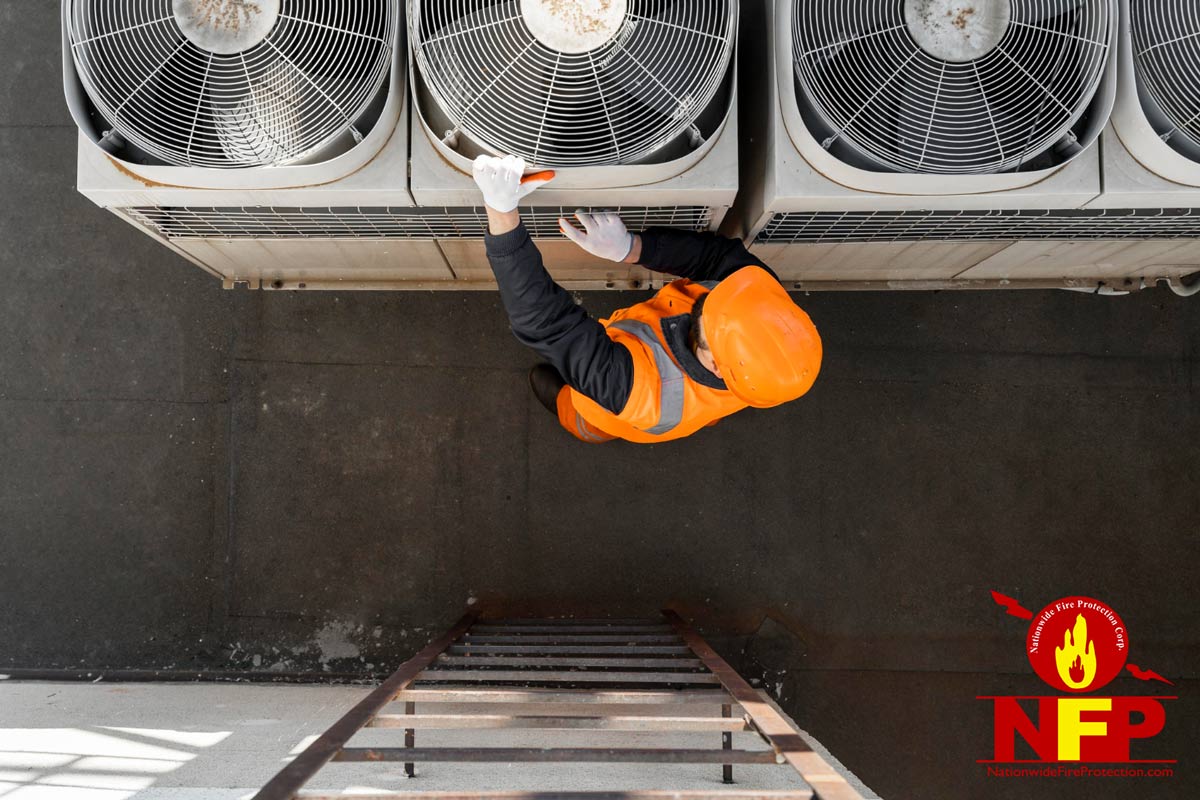In today’s rapidly evolving world, promoting sustainability has become a critical focus for businesses across various industries, including the restaurant sector. Restaurants consume significant amounts of energy to power their operations, making energy conservation measures essential. One effective solution to promote sustainability and optimize energy usage is the implementation of electrical interlocking systems. By integrating electrical interlocking technology into restaurant facilities, owners can achieve greater control over energy consumption, enhance operational efficiency, and reduce environmental impact. In this blog post, we will explore the benefits of electrical interlocking in restaurants and how it contributes to energy conservation.
Understanding Electrical Interlocking
Electrical interlocking is a sophisticated system that helps manage and control electrical equipment, ensuring proper sequencing and interconnection. It enables synchronized operation and enhances safety by preventing hazardous situations, such as equipment malfunction or electrical overload. Electrical interlocking systems employ smart technology to create logical connections between various electrical components, allowing for seamless coordination and automation.
Energy Conservation in Restaurants
Restaurants are energy-intensive establishments, relying on multiple appliances, heating, ventilation, and lighting systems. However, a significant portion of energy consumption in restaurants can be attributed to inefficient practices and equipment. By adopting energy conservation measures, restaurant owners can reduce energy costs and minimize their carbon footprint.
The Role of Electrical Interlocking in Energy Conservation
Electrical interlocking plays a crucial role in promoting energy conservation in restaurants. Here are some key ways it contributes to sustainable operations:
a. Equipment Optimization:
Electrical interlocking ensures that restaurant equipment operates only when necessary. By integrating interlocking mechanisms into appliances, such as ovens, grills, and fryers, energy usage can be regulated based on demand. This prevents unnecessary idle times and reduces energy waste.
b. Load Management:
With electrical interlocking, restaurant owners can manage the power load more effectively. By controlling electrical equipment sequencing, interlocking systems prevent simultaneous activation of high-energy-consuming appliances. This load management strategy helps avoid peak demand charges and optimizes energy distribution within the establishment.
c. Lighting Control:
Electrical interlocking extends to lighting systems, allowing for intelligent control. By integrating lighting circuits with interlocking systems, restaurants can implement automatic lighting schedules, occupancy sensors, and daylight harvesting techniques. These measures not only conserve energy but also create a comfortable ambiance for customers and staff.
d. HVAC Optimization:
Heating, ventilation, and air conditioning (HVAC) systems account for a significant portion of energy consumption in restaurants. Electrical interlocking enables intelligent control of HVAC equipment, allowing for temperature and humidity regulation based on occupancy and operational needs. By optimizing HVAC usage, restaurants can reduce energy waste while maintaining a comfortable environment.
Benefits of Electrical Interlocking Beyond Energy Conservation
While energy conservation is a primary advantage of electrical interlocking, it offers additional benefits that contribute to the overall efficiency and safety of restaurant operations:
a. Enhanced Safety:
Electrical interlocking systems prevent dangerous situations by ensuring proper sequencing and interconnection of equipment. They can detect faults, such as short circuits or overloads, and automatically shut down the affected circuits, reducing the risk of electrical accidents or fires.
b. Operational Efficiency:
Interlocking mechanisms streamline processes by automating equipment operation and reducing manual intervention. This results in improved workflow, reduced human error, and increased productivity in restaurant kitchens.
c. Compliance with Codes and Standards:
Electrical interlocking helps restaurants meet regulatory requirements and industry standards related to safety and energy efficiency. By implementing interlocking systems, restaurant owners demonstrate their commitment to responsible and sustainable practices.
Integration with Building Management Systems (BMS)

Electrical interlocking can be seamlessly integrated with building management systems (BMS) to create a comprehensive control and monitoring platform. BMS allows centralized management of various building systems, including lighting, HVAC, security, and energy consumption. By connecting the electrical interlocking system to the BMS, restaurant owners can have real-time access to data and analytics, enabling them to make informed decisions to optimize energy usage and identify potential areas for improvement.
Training and Maintenance
To ensure the effective operation of electrical interlocking systems and maximize their benefits, restaurant staff should receive proper training on system functionality, maintenance procedures, and safety protocols. Training programs can be conducted by qualified professionals or system manufacturers to equip restaurant personnel with the necessary knowledge and skills to operate and maintain the interlocking system.
Regular maintenance and periodic inspections of the electrical interlocking system are crucial to ensure its continued functionality and reliability. It is recommended to establish a maintenance schedule and engage qualified technicians or service providers who specialize in interlocking systems to perform routine checks, troubleshoot issues, and conduct necessary repairs or upgrades.
How Electrical Interlocking Systems Improve Workflow in Restaurant Kitchens
1. Sequential Equipment Activation:
Electrical interlocking allows for the sequential activation of kitchen equipment based on predefined workflows. For instance, when a chef initiates the cooking process, the interlocking system can automatically activate the necessary equipment in a specific order, such as turning on the exhaust hood, followed by the stove, and then the ventilation system. This eliminates the need for manual switching and ensures that equipment is ready for use in the correct sequence, streamlining the cooking process and saving valuable time.
2. Automated Timers and Alarms:
Interlocking systems can be programmed to incorporate timers and alarms for various kitchen processes. For example, when a specific cooking time is set for a particular dish, the interlocking system can start a timer and automatically trigger an alarm when the cooking time is complete. This enables chefs to focus on other tasks without constantly monitoring cooking times, enhancing efficiency and preventing overcooking or undercooking of food.
3. Integration with Display Systems:
Electrical interlocking can integrate with kitchen display systems (KDS) or order management systems to facilitate efficient communication between the kitchen staff. When an order is received, the interlocking system can display the order details on screens in the kitchen, specifying the required equipment and cooking instructions. This ensures that all kitchen staff are well-informed about the orders, reducing miscommunication and minimizing errors in food preparation.
4. Smart Load Management:
By interlocking kitchen equipment with power distribution systems, electrical interlocking enables smart load management. The system can monitor the power load and automatically adjust the energy distribution based on the equipment in use. For example, when multiple high-energy-consuming appliances are in operation simultaneously, the interlocking system can prioritize power distribution to ensure that all equipment receives sufficient power without overloading the electrical circuits. This prevents electrical tripping, reduces downtime, and optimizes the overall workflow in the kitchen.
5. Safety Interlocks:
Electrical interlocking systems incorporate safety interlocks to prevent accidents and ensure proper equipment usage. For instance, interlocks can be implemented to ensure that certain equipment, such as fryers or grills, cannot be activated unless specific safety conditions are met, such as the presence of a fire suppression system or proper ventilation. These safety interlocks promote a secure working environment, minimize the risk of accidents, and contribute to a smoother workflow in the kitchen.
By streamlining processes, automating tasks, and improving safety measures, electrical interlocking systems significantly enhance workflow efficiency in restaurant kitchens. They eliminate manual interventions, reduce errors, and provide a structured approach to equipment activation, timers, load management, and safety protocols, ultimately optimizing the overall kitchen operations.
Case Studies: Real-Life Examples
To demonstrate the effectiveness of electrical interlocking in promoting sustainability and energy conservation, let’s explore two real-life case studies:
Case Study 1: “Green Bistro”
Green Bistro, a popular restaurant chain, implemented electrical interlocking systems throughout its facilities. By integrating interlocking mechanisms into kitchen equipment and lighting systems, the chain achieved a remarkable 25% reduction in energy consumption. The interlocking system ensured that appliances were only operational during peak hours, optimizing energy usage during high-demand periods. Additionally, lighting interlocking allowed for efficient control of ambient lighting, further reducing energy waste.
Case Study 2: “Eco-Eatery”
Eco-Eatery, a sustainable restaurant known for its eco-friendly practices, installed electrical interlocking systems in its HVAC units and refrigeration systems. By leveraging interlocking technology, Eco-Eatery achieved a 30% decrease in HVAC energy consumption by intelligently managing temperature settings based on occupancy and outdoor weather conditions. The interlocking system also monitored refrigeration units, ensuring optimal temperature control and reducing energy waste caused by inefficient cooling.
Install an Electrical Interlocking System for Your Restaurant in Denver, CO
Electrical interlocking systems offer tremendous potential for promoting sustainability and energy conservation in restaurants. By integrating interlocking mechanisms into various electrical components, restaurant owners can optimize energy usage, reduce costs, and minimize their environmental impact. The case studies discussed highlight the tangible benefits of electrical interlocking in real-life scenarios. As the restaurant industry embraces sustainability practices, electrical interlocking emerges as a powerful tool to achieve energy efficiency and operational optimization. By investing in this technology, restaurant owners can contribute to a greener future while maintaining their commitment to quality, safety, and customer satisfaction.
Nationwide Fire Protection Install, replace, and repair electrical interlocking systems in Denver, CO. Call us now for a free quote.

